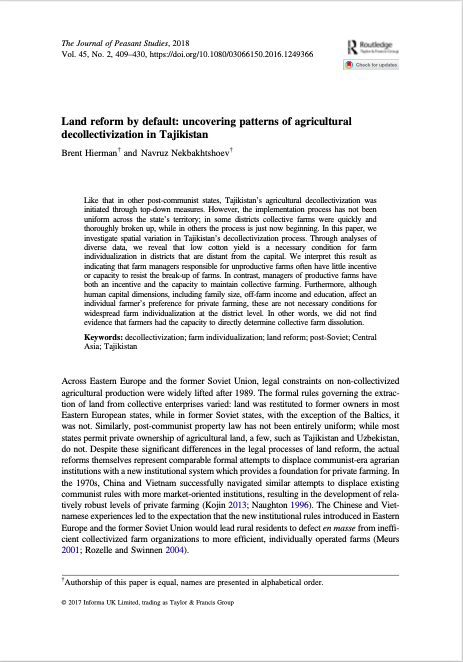Resource information
Like that in other post-communist states, Tajikistan’s agricultural decollectivization was initiated through top-down measures. However, the implementation process has not been uniform across the state’s territory; in some districts collective farms were quickly and thoroughly broken up, while in others the process is just now beginning. In this paper, we investigate spatial variation in Tajikistan’s decollectivization process. Through analyses of diverse data, we reveal that low cotton yield is a necessary condition for farm individualization in districts that are distant from the capital. We interpret this result as indicating that farm managers responsible for unproductive farms often have little incentive or capacity to resist the break-up of farms. In contrast, managers of productive farms have both an incentive and the capacity to maintain collective farming. Furthermore, although human capital dimensions, including family size, off-farm income and education, affect an individual farmer’s preference for private farming, these are not necessary conditions for widespread farm individualization at the district level. In other words, we did not find evidence that farmers had the capacity to directly determine collective farm dissolution.

